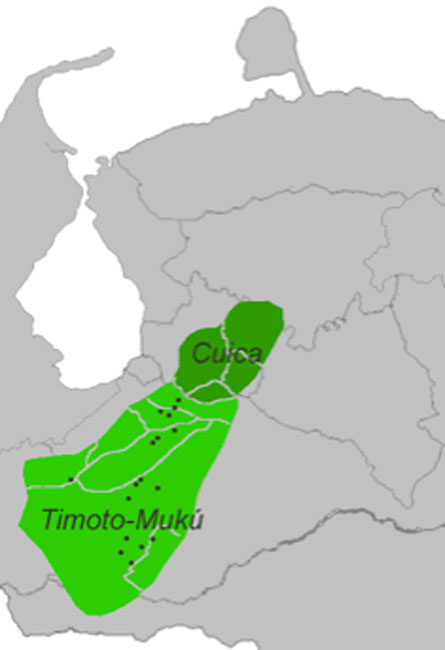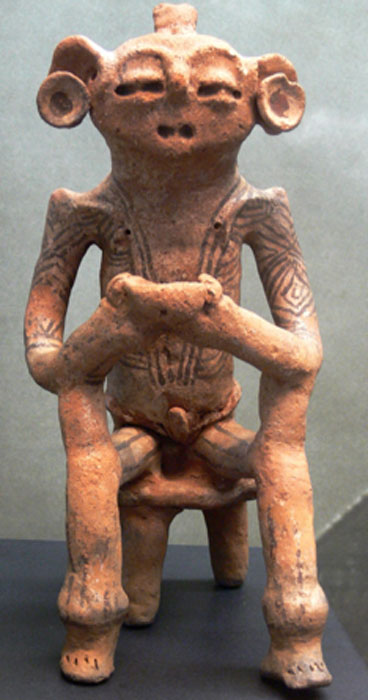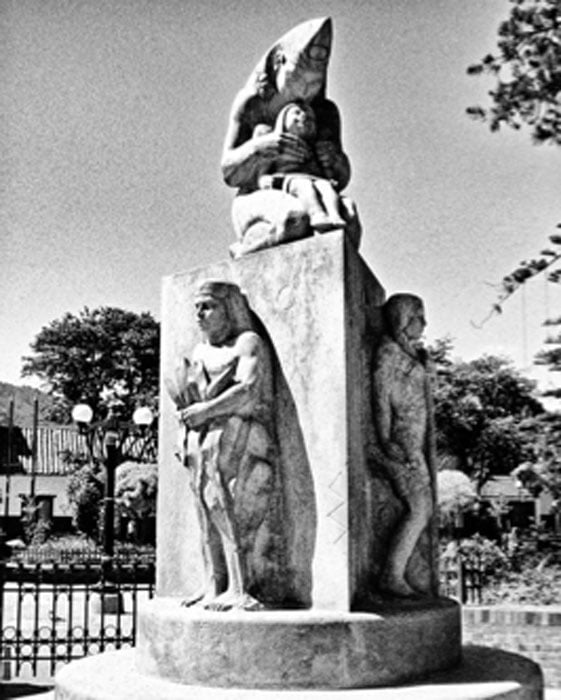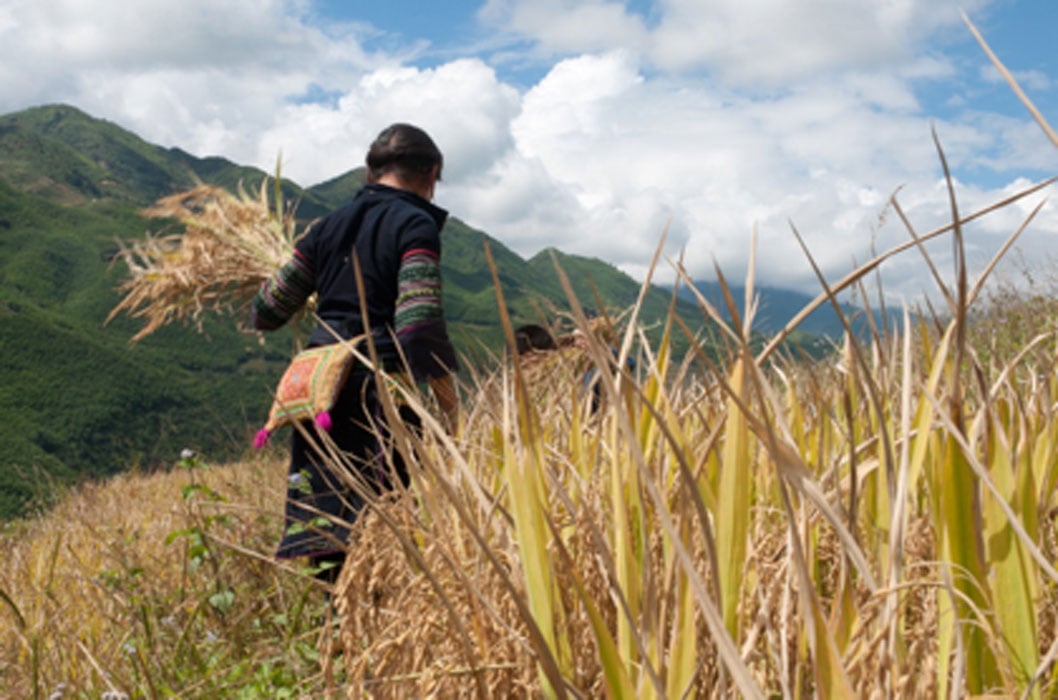Beyond the Mists of Time: The Mysterious Timoto-Cuica Culture of the Venezuelan Andes
When we speak of the pre-Columbian South American civilizations, the first to come to mind are the Incas, the Tiwanaku, the Nazca, or perhaps even the Mayans. But we rarely venture deeper into the awe inspiring world of the ancient South American cultures – a world so rich and teeming with wondrous, vivid peoples, like the Timoto-Cuica towards the east of the continent in part of what is now Venezuela.
Today we’ll take a glimpse into the very heart of South America, exploring one of the enigmatic cultures that thrived and expanded in times before the European discoveries. What follows is a tale of a lost nation, brought to life – a result of painstaking research and striking ancient connections. This is a story of the ancient peoples of the Venezuelan Andes. This is a story about the Timoto-Cuica.
An Overview of the Timoto-Cuica Culture
Before we begin our account of this pre-Columbian culture, we need to reflect on the sheer size and complexity of the South America of this period. With an area of 6,888,063 square miles (17,840,000 square kilometers) this continent is the fourth largest in the world, and as such it has been the home to many, many diverse peoples over the centuries.
Geographically varied, South America’s native peoples were very diverse and isolated tribes were numerous. This isolation resulted in hundreds of different languages, cultures, beliefs, and customs. From the nomadic, hunter-gatherer tribes of the Amazon, to the distinct tribes along the mighty Orinoco River, or the wholly different civilizations of Peru and the Andes – the tribes numbered hundreds and many of them are gone without a trace.

Timoto-Cuica languages: Cuica dialects = dark green, Timoto-Mukú = light green, black spots are toponyms in Mukú. (Davius / Public Domain)
This wealth of information inevitably gives way to small amounts of confusion, when tribal names, dialects, or overlapping myths clash with one another, leaving scholars with a lot of work on their hands.
Luckily, the culture we’re exploring today left a solid enough trace, as they created a budding, advanced civilization at the northern tip of the Andes, in Venezuela, in today’s states of Mérida, Trujillo, and Táchira. But even so, their tale is still obscure, shrouded in mystery. Yet, all things secretive and hidden are often intriguing, and that is exactly the case with the Timoto-Cuica culture.
- Pre-Columbian Murals and Norse Sagas Suggest Vikings Met the Aztecs, and the Outcome Was Not Pretty
- Chaac and Tlaloc: Two Pre-Columbian Mesoamerican Gods of the Rain
- Incredible Site Shows Religious Rituals Occured At Lake Titicaca Way Before the Incas Arrived

Timoto-Cuica territory, in present-day Mérida, Venezuela. (Dal89 / Public Domain)
Most scholars agree that the Timoto-Cuicas arose as a distinct tribal group, with the Timotes and the Cuicas as the main components of a largely same identity. They possessed an advanced technology and thrived as a civilization much more developed than the nomadic tribes further east. They were mostly present in the area of today’s Merido state in Venezuela, in the hilly Andean region, with the sub-group of Cuicas living slightly to the north, in the llano plains.
The chief characteristic of the Timoto-Cuicas culture was their focus on agriculture, primitive industry, and trade. They focused heavily on the terraced cultivation system, by creating irrigated platforms on the hillsides of the region – a system often seen in the Andean civilizations.
By creating large ‘steps’, reinforcing them with stone, and irrigating them with a system of channels, they managed to succeed in creating an efficient agricultural system. This skillful method of cultivation allowed the Timoto-Cuicas to grow an abundance of vegetables – the earliest sources mention the growing of potatoes and corn, as well as beans, sweet yucca, and several indigenous plants: cassava, mecuy, quiba, guaba, and agave.

Timoto-Cuica farmers used agricultural terraces. (AlexSP / Pubic Domain)
This became the basis of their trade with the neighboring tribes – along with the great amounts of precious stones which they excavated, like serpentine and nephrite, as attested in numerous archaeological excavations. In exchange for these, they imported salt, tobacco, and fabrics.
The Timoto-Cuicas also placed a cultural and hierarchic emphasis on several birds which they successfully domesticated – turtledoves, parrots, and paují – which we know as the helmeted currasow (Pauxi pauxi). The latter symbolized wealth and status in their society.
Another core element of the social life in the Timoto-Cuicas culture was communal work – often carried out in large groups, based on cooperation. This system is efficient and was the key ingredient in the development of the advanced Andean civilizations. This unity of the people is also attested in the so-called mintoyes - large fort-like structures that were used depending on the situation – as grain silos, tombs, or fortresses. They could house a large number of people and endure sieges.
The Possible Timoto-Cuicas Connection with the Muisca Civilization
The Timoto-Cuicas were, by all accounts, a gathering of several similar tribes – separated into allied chiefdoms and all speaking some form of the Chibcha language. The most plausible theory is that they were heavily influenced by the sprawling, rich civilization of the Muisca Confederation that thrived to the south of their territories.

La balsa Muisca ‘the Muisca raft’, a pre-Columbian gold sculpture representing the Muisca's offerings of gold. (Tyler ser Noche / CC BY-SA 2.0)
All of these tribes, including the Muisca, spoke varied and often mutually unintelligible dialects of the Chibcha language which provides another link that connects them – culturally as well as linguistically. As the Timoto-Cuicas were influenced by their southern neighbors, we can understand them better by providing a few details about the Muisca Confederation.
The Muisca, also known as the Chibcha or the Muysca, were one of the four highly advanced civilizations in South America, alongside the Mayas, Incas, and the Aztecs. This fact in itself places significant importance on this largely underrated culture.
The Muisca arose as a dominant force in the Altiplano plateau thanks to their developed network of metallurgy, farming, mining, and trading. But to expand and solidify their confederation, the Muisca often reverted to war. In the late stages of their civilization, before the Spanish conquest, the Muisca ruler Saguamanchica waged a brutal war against the neighboring aggressive tribes such as the Panche, the Caribs, and the Sutagao.

Muisca ruler Saguamanchica. (Saori Sama / Public Domain)
These wars also give us a glimpse into the overall nature of the Timoto-Cuicas. Several sources confirm that the Timotes were the more militaristic, aggressive part of the culture, while the Cuicas were the opposite – they never expanded their territories, but never lost them either.
When the conquistador Juan Rodriguez entered into the foothills of the Andes, sent by the Pamplona government, it was only the Timotes that stood against his force of sixty footmen and fourteen mounted cavalrymen. But neither the Timotes nor the Cuicas ever warred with the Muisca to the south – further signifying their possible relations.
Further connections can be seen through intricate pottery work, a focus on crafting idols, as well as luxurious items from gold and gold-silver-copper alloy known as tumbaga.
Economy and Trading in the Timoto-Cuica Society
Trade was the major element of the Timoto-Cuica society and helped them establish an advanced enough culture that would influence the smaller, often primitive tribes around them. Some of these tribes are mentioned to be the Mucuchíes, the Migures, the Tabayes, and the Mucuñuques, often cited as the part of the ‘confederation’ of Chibcha-speaking tribes of which the central were the Timotes and the Cuicas.
Their advanced grasp on agriculture, and the possibility to grow numerous foods, allowed them to establish a largely peaceful relationship with those around them. The two largest groups with which they traded were the neighboring Arawak and Carib peoples. Their trading was centered on cotton, beech, salt, precious stones, fabric, cocoa beans, and vegetables.
- Exploring the Cupisnique Civilization: First Amongst the Supernatural Decapitators?
- Graves Hinting at Child Sacrifice Found Near Temple Ruins in Peru
- Ritual Chambers of the Andes: Used in Secret, Near Death Simulations

The Timoto-Cuica traded agriculture products with tribes around them. (Tamorlan / CC BY-SA 3.0)
These trade routes were mostly concentrated on the high mountain passes of the Venezuelan Andes, and many evidences remain of elaborate system of ‘tarabitas’ – a sort of cable car constructed from vines, fique ropes, and wood – that allowed the Timoto-Cuicas to traverse chasms and gorges.
The Chibchan Languages
Whether or not the Timotes and the Cuicas spoke a unique language is a matter of much debate. What most researchers agree upon is that they either spoke a language influenced highly by the Chibchan and Arawak languages, or simply a separate dialect of Chibchan.
Several dialects have been reported as possibly related to the Timote language, mainly the Maripú, Mocochí, Tiguiñó, and Escaguey, all of which point to the wealth of languages and dialects present in every native South American culture. As a matter of fact, the sheer complexity of languages in the pre-Columbian era is attested by the fact that up to 99 dialects are found only in the Timoto-Cuica language group. But as many of these languages and dialects are completely lost and only attested in toponyms, we can agree that the linguistics of these cultures poses a significant unexplored region when researching the rich history of that era.
The most plausible theory is that Timoto-Cuica language and its dialects are all members of the very large Chibcha language branch, which alongside the Quechua language, formed one of the largest groups on the continent.
Light and Darkness: The Religion and the Mythology of Timoto-Cuicas
Several sources and remnants point out that the Timoto-Cuica culture and society revolved around religion and a strong mythological base. There was a caste level centered on priests and priestesses, called piaches or mojanes, and it was focused in the ceremonial centers in larger settlements. One such ceremonial center is connected to the modern town of Escuque, which was possibly a Cuica city at the northernmost extent of the Timoto-Cuica area.
They left behind them a lot of archeological evidence in form of votive pottery idols with human features, the so-called tunjos which also occur in the Muisca culture. These seem to have had a great religious importance. Several gods and creatures that were worshipped by these peoples are known, and they share some aspects with the mythology of the neighboring Muiscas.

The Timoto-Cuica culture worshipped several gods and creatures. (Helvetiker / Public Domain)
Juan de Castellanos, early Spanish explorer, reports that a goddess, Icaque, is venerated in the temples, and that human sacrifices are carried out in her name. This Icaque is possibly a cognate of Pachamama – the fertility goddess of the Andean cultures.
But the supreme god of the Timoto-Cuicas was the so-called Ches - “a spirit that dispenses good and punishment... a spirit that inhabited the highest peaks and lonely lakes...” – which shows us the connection with the veneration of high mountain peaks of the Andes, also mentioned in many sources.
It is possible that Ches was a god connected with the nature and natural elements, since rituals to him were performed in order to learn whether or not the crops would yield. Sacrifices, by all accounts human, were performed in order to appease Ches and ensure a bountiful harvest.
With both Icaque and Ches, human sacrifice is mentioned, and we must mention that it often occurred in the pre-Columbian civilizations, especially the sacrifice of children. Incas, Aztecs, as well as the Timoto-Cuicas, all sacrificed children as the means to appease their gods. Juan de Castellanos writes that the Timoto-Cuicas, centered in today’s Merida state, sacrificed children to appease Icaque.
The other attested deities have many similarities to those of the Muisca pantheon. Zuhe, the Timoto-Cuica god of the sun, is cognate with the Muisca god Sué or Suhé, while the Chia, the moon god, is the same as Muisca Chía. This, once more, provides an important link between the Muisca and the neighboring tribes, upon which they exerted their influence.

Statue of Chía, god of the sun, one of the deities of the Timoto-Cuica. (Andruvv / CC BY-SA 2.0)
Another large part of their belief was centered on animals. The bat – a popular figure connected with death and portrayed as the messenger of the dead – was a central figure for the Timoto-Cuicas. Numerous archaeological finds contain bat figurines carved out of nephrite stones and placed beneath the head of a deceased person. The others were the deer – perhaps connected to the god of war; as well as the paují bird which was a symbol of hierarchy.
Thoughts About the Mysterious Timoto-Cuica and Ancient Cultures of the Andes
The awe-inspiring wealth of information that can be found in the ancient history of the South American continent is a definite inspiration and can require a lifetime of exploration in order to fully grasp the sheer number of cultures and civilizations. And especially in the Andes - the largest continental mountain range in the world - we can come across numerous highly advanced civilizations that are shrouded in mystery: the Nazca, the Moche and the Chachapoyas, the Valdivia culture – oldest in the Americas, as well as the Incas, the Muiscas, and of course, the Timoto-Cuicas.
Reading and learning about them, we descend into a primeval world, a time of early human development rife with intricate societies, sacrificial rituals, complex myths, and a symbiosis with nature. But the history was not in their favor – little information about them remains, and what little archaeological evidence remains is often subject to grave robbing. But nonetheless, researchers and scholars continue to study these complex peoples, and together with them we can show you this little glimpse into the life of pre-Columbian cultures of South America.
Top image: The ancient Timoto-Cuica culture focused on agriculture. Source: Melissa / Adobe Stock
References
Arellano, F. 1986. Una Introducción a la Venezuela Prehispánica: Culturas de las Naciones Indígenas Venezolanas. Universidad Catolica Andres Bello.
Bastidas Valecillos, L. 2003. De los timoto-cuicas a la Invisibilidad del indígena. Boletín Antropológico. [Online] Available at: http://www.redalyc.org/pdf/712/71205903.pdf
Etnias del Mundo. Date Unknown. Timotocuicas: Origen, historia, ubicación y mas. [Online] Available at:
www.etniasdelmundo.com/c-venezuela/timotocuicas/
Maddicks, R. 2007. Timote-Cuica: Caribay and the Five White Eagles of Merida. [Online] Available at: http://venezuelanindian.blogspot.com/2007/11/timote-cuica-caribay-and-five-white.html
Steward H. 1950. Handbook of South American Indians. Smithsonian Institution.
Various. 2012. Memorias de Venezuela: Venezuela Indígena. Centro Nacional de Historia. [Online] Available at: http://www.cnh.gob.ve/index.php/catalogo-de-publicaciones/137-colecciones/606-cmvenezuela



















